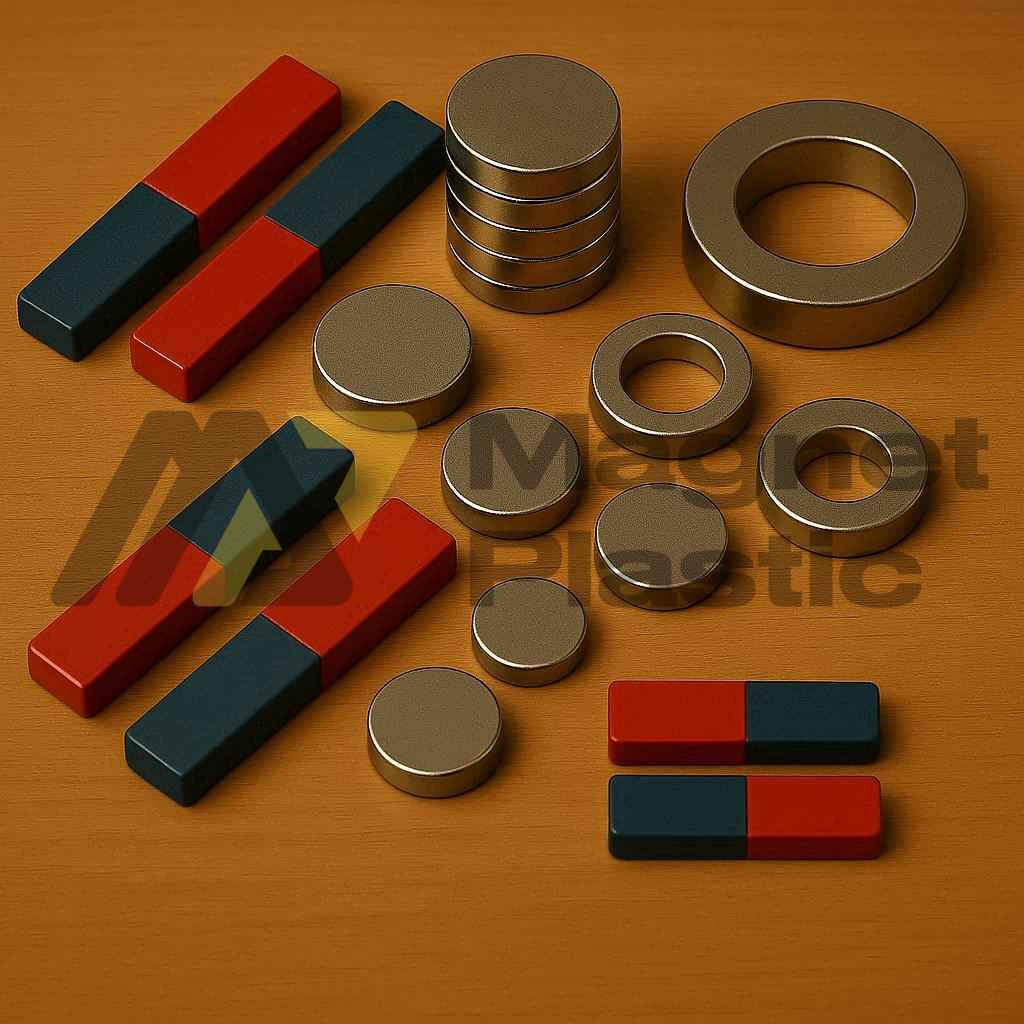How many types of magnets are there?
Permanent magnets are essential components in modern technology. Their main feature is their ability to maintain magnetization without the need for an external energy source, making them highly efficient, reliable, and durable.
Manufactured from hard ferromagnetic materials, these magnets retain their magnetic field over time and are widely used in industrial, electronic, and energy sectors.
The performance of a permanent magnet depends on several factors: magnetic strength, coercivity, remanence, corrosion resistance, and operating temperature.
Based on these properties, each type of magnet is suited to specific technical requirements. Permanent magnets can be produced in various shapes — blocks, discs, rings, or segments — depending on the intended application. They are often coated with nickel, epoxy, or Teflon to provide additional protection against corrosion and extend their service life.
There are four main types of permanent magnets, each with distinct characteristics.
1. Neodymium Magnets (NdFeB)
Part of the rare earth group, neodymium magnets are the strongest permanent magnets available. Despite their small size, they offer exceptionally high magnetic strength, making them ideal for electric motors, audio systems, sensors, and medical devices.
Their main drawback is low resistance to corrosion, which is why they are usually coated with protective layers such as nickel or zinc. They can operate at temperatures of up to 200°C, depending on their grade (from N30 to N52).
At Magnetplastic, we offer a wide range of high-performance neodymium magnets designed to operate between 80°C and 200°C, ensuring stability and power even in demanding environments.
2. Ferrite Magnets
Also known as ceramic magnets, ferrite magnets are valued for their low cost and excellent corrosion resistance, making them ideal for outdoor or humid environments.
There are two main types: hard ferrite, with high coercivity (used in loudspeakers, motors, and microwave devices), and soft ferrite, with lower coercivity (commonly used in transformers).
Their sintered manufacturing process allows for a wide variety of shapes and magnetic orientations suited to different industrial applications.
3. Samarium-Cobalt Magnets (SmCo)
Samarium magnets, made from a combination of samarium and cobalt, offer excellent thermal stability and resistance to demagnetization.
They can operate in extreme temperature ranges, from -40°C to 350°C, making them suitable for precision motors, thermal sensors, and aerospace systems.
Although more expensive than neodymium magnets, their superior reliability and thermal performance make them ideal for high-demand industrial applications.
4. Alnico Magnets
Composed of aluminum, nickel, and cobalt, Alnico magnets were among the first powerful industrial magnets developed.
They stand out for their exceptional thermal stability (from -250°C to 425°C) and excellent chemical resistance, making them suitable for measuring instruments, motors, and scientific equipment.
While they are not as strong as rare earth magnets, Alnico magnets remain a reliable and durable solution for applications requiring high temperature resistance and magnetic stability.
In summary, permanent magnets represent a cornerstone of modern technology. Their continuous development has enabled more efficient, sustainable, and high-performance solutions across fields such as electric mobility, robotics, renewable energy, and precision electronics.
At Magnetplastic, we are committed to delivering quality, innovation, and responsible use of magnetic technology, providing customized solutions that meet the evolving needs of every industry.
